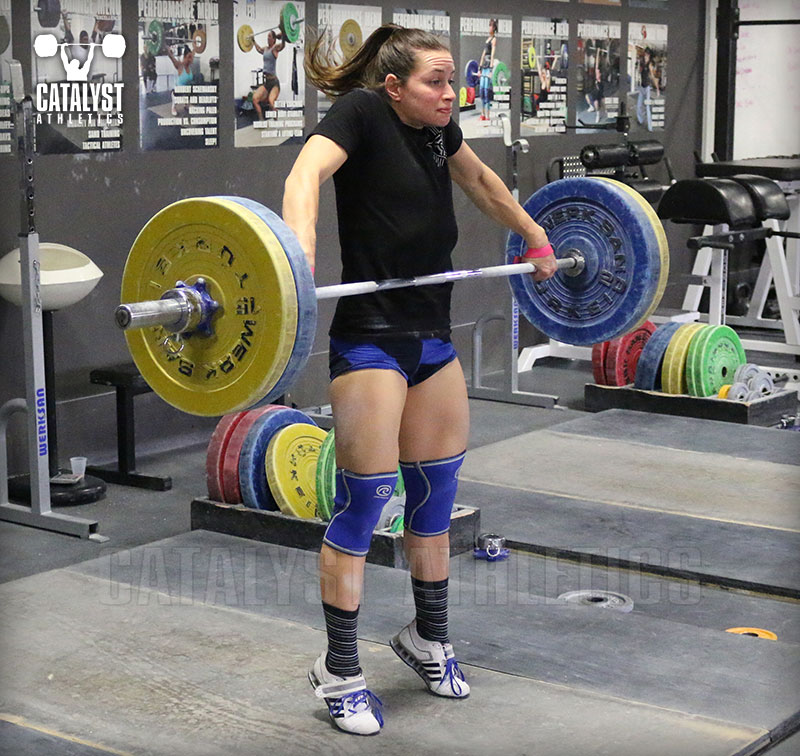Articles
Feel it First: Weightlifting Technique Corrections
May 12 2014

May 12 2014

A point I try to emphasize in all of my seminars is that it’s generally easier and more effective to teach athletes’ bodies what to do than to teach their brains. That is, if you can get the athlete to move the way you want through exercises and lift segments, you’ll make more progress in less time than if you attempt to teach them conceptually what they should be doing.
One area where this is very simply illustrated and immediately effective is in abbreviated complexes that allow the athlete to first feel the position or movement you’re trying to get them to do in the snatch, clean or jerk, followed by a snatch, clean or jerk to apply it.
An example of this would be an instance in which an athlete is failing to extend the hips fully and keep the bar moving close to the legs up to the hips in the snatch. I will often have that athlete do 3 snatch deadlifts from the knee to a simulated finish position with the legs vertical and the hips slightly hyperextended (shoulders behind the hips), lightly sliding the bar up the thighs as they perform the movement at a relatively slow speed, followed by a snatch from the knee. I have yet to see this particular drill not create immediate improvement to some degree.
An even more simplified iteration of this is simply having the athlete stand in that simulated finish position before the lift—to feel that orientation and balance of the body so the body knows where it should be going.
Figure out what the body is failing to do, then get the body to do it, whether or not the athlete understands what or why, and then before the athlete has time to think about it, get them to perform the lift you’re trying to correct. If you do this well—that is, choose your drills appropriately—you’ll see marked improvement.
One area where this is very simply illustrated and immediately effective is in abbreviated complexes that allow the athlete to first feel the position or movement you’re trying to get them to do in the snatch, clean or jerk, followed by a snatch, clean or jerk to apply it.
An example of this would be an instance in which an athlete is failing to extend the hips fully and keep the bar moving close to the legs up to the hips in the snatch. I will often have that athlete do 3 snatch deadlifts from the knee to a simulated finish position with the legs vertical and the hips slightly hyperextended (shoulders behind the hips), lightly sliding the bar up the thighs as they perform the movement at a relatively slow speed, followed by a snatch from the knee. I have yet to see this particular drill not create immediate improvement to some degree.
An even more simplified iteration of this is simply having the athlete stand in that simulated finish position before the lift—to feel that orientation and balance of the body so the body knows where it should be going.
Figure out what the body is failing to do, then get the body to do it, whether or not the athlete understands what or why, and then before the athlete has time to think about it, get them to perform the lift you’re trying to correct. If you do this well—that is, choose your drills appropriately—you’ll see marked improvement.
